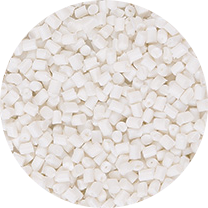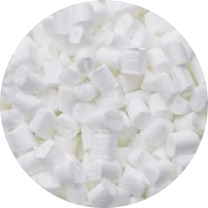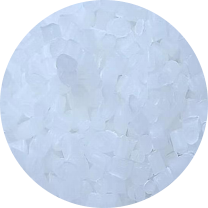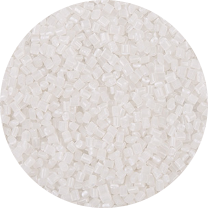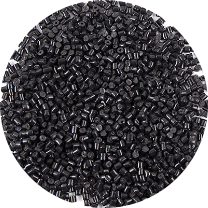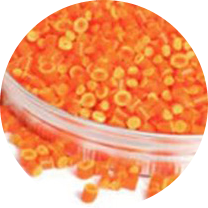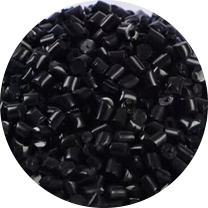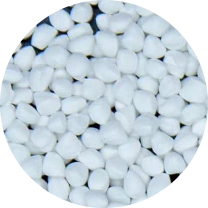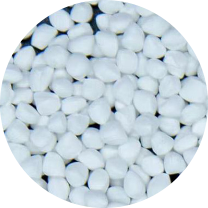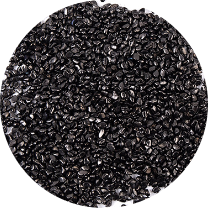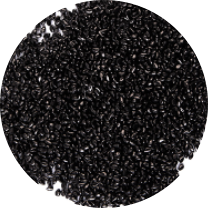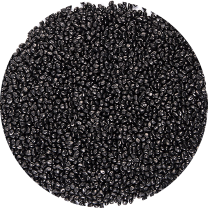Injection White Masterbatch: The Ultimate Guide to Selection and Application
- 1 What is Injection White Masterbatch and How Does It Work?
- 2
- 3 Key Factors for Choosing the Right White Masterbatch
- 4 Benefits of Using Masterbatch over Alternative Coloring Methods
- 5 Common Challenges and Solutions in Application
- 6 Optimizing Your Process for Maximum Efficiency
- 7 FAQ
- 7.1 What is the typical let-down ratio for injection white masterbatch?
- 7.2 How does injection white masterbatch differ from one used for blow molding or extrusion?
- 7.3 Can I use a universal white masterbatch for different polymers?
- 7.4 What causes yellowing in white plastic parts over time?
- 7.5 How do I ensure color consistency across different production batches?
Injection White Masterbatch is a highly concentrated mixture of pigments or additives encapsulated within a carrier resin, specifically designed for injection molding processes. It is the go-to solution for achieving brilliant, consistent, and cost-effective white coloring in a vast array of plastic products. This comprehensive guide delves deep into the technicalities, benefits, and selection criteria for Injection White Masterbatch, empowering manufacturers and product designers to make informed decisions for their projects. From understanding key properties to navigating common application challenges, we cover everything you need to know to optimize your production and achieve flawless results.
What is Injection White Masterbatch and How Does It Work?
At its core, an Injection White Masterbatch is a pre-dispersed colorant system. Unlike dry pigments that can be dusty and difficult to handle, masterbatch is supplied in granular form, similar to the base polymer. This makes it perfectly suited for automated feeding systems in modern injection molding facilities. The masterbatch is metered in a specific ratio (let-down ratio) with the natural (uncolored) polymer, and the two are melted and homogenized within the injection molding machine's barrel. This process ensures even distribution of the white pigment throughout the final product, resulting in a uniform color and opacity. The primary advantages of this form of coloring are vastly improved dispersion, reduced equipment contamination, and enhanced working environment safety.
- Superior Dispersion: The pigments are already pre-wetted and dispersed within the carrier resin, leading to fewer agglomerates and a more consistent color finish compared to using raw powders.
- Ease of Handling: Granular form eliminates dust, reducing housekeeping issues and potential health hazards for operators.
- Cost-Effectiveness: While the initial cost per kilogram is higher than pigments, the reduction in waste, cleanup time, and energy consumption often leads to a lower total cost of ownership.
- Process Stability: Provides consistent rheological properties, which helps in maintaining stable processing parameters and reducing rejects.
Injection Molding White Masterbatch White Injection Plastic Granules
Key Factors for Choosing the Right White Masterbatch
Selecting the appropriate injection molding white masterbatch is not a one-size-fits-all decision. Several critical factors must be considered to ensure compatibility with your base resin, process conditions, and final product requirements. A poor choice can lead to defects like splay, loss of mechanical properties, or uneven coloring. The key is to match the masterbatch's characteristics with the application's specific demands, considering everything from the polymer family to the regulatory environment the product will exist in.
- Carrier Resin Compatibility: The carrier resin of the masterbatch must be miscible with the base polymer (e.g., PE-based masterbatch for PE products, PP-based for PP products) to ensure proper blending and avoid delamination.
- Pigment Type and Concentration: Titanium Dioxide (TiO2) is the standard for achieving opacity and brightness. The percentage of TiO2 in the masterbatch determines its coloring power and the required let-down ratio.
- Thermal Stability: The masterbatch must withstand the processing temperatures of the injection molding machine without degrading, which could cause yellowing or gas formation.
- Let-Down Ratio: This is the ratio of natural polymer to masterbatch (e.g., 20:1, 50:1). A lower ratio means using more masterbatch, which can affect the final part's properties and cost.
- End-Use Application Requirements: Consider factors like food contact compliance (FDA, EU regulations), UV resistance for outdoor use, or specific mechanical properties like impact strength.
Understanding TiO2 Content and Opacity
The opacity and whitening power of a masterbatch are directly proportional to its Titanium Dioxide (TiO2) content. A higher TiO2 concentration means you need to use less masterbatch to achieve the same level of whiteness and hiding power, which can be more economical and have less impact on the polymer's native properties. However, higher loadings can also increase melt viscosity and potentially affect surface finish.
| TiO2 Concentration Range | Typical Let-Down Ratio | Best For |
| 20% - 40% | 25:1 to 50:1 | Applications requiring low to medium opacity or where cost is a primary driver. |
| 50% - 60% | 20:1 to 25:1 | General purpose applications requiring good whiteness and hiding power. |
| 70% - 80% | 15:1 to 20:1 | High-performance applications requiring maximum opacity, brilliance, and thin-wall capabilities. |
Benefits of Using Masterbatch over Alternative Coloring Methods
When compared to other coloring methods like compounded color or dry pigment, white masterbatch for plastic injection offers a compelling set of advantages that streamline manufacturing and enhance product quality. While compounded color (pre-colored resin) offers excellent homogeneity, it locks you into a large volume of a single color. Dry pigments, on the other hand, are messy and pose significant handling challenges. Masterbatch strikes the perfect balance between flexibility, quality, and operational efficiency.
- Inventory Flexibility: Manufacturers can stock large quantities of natural polymer and small amounts of various color masterbatches, allowing for quick color changes and reduced inventory costs.
- Improved Color Consistency: Batch-to-batch color variation is minimized due to the controlled manufacturing process of the masterbatch.
- Cleaner Production Environment: The elimination of powder pigments reduces airborne dust, protecting machinery from contamination and creating a safer workplace.
- Technical Support: Reputable masterbatch producers provide significant technical expertise to help troubleshoot processing issues and optimize formulations.
Common Challenges and Solutions in Application
Even with a high-quality product, users can encounter issues when working with high opacity white masterbatch. Understanding the root cause of these common problems is the first step toward implementing effective solutions. Most challenges arise from improper dispersion, moisture, or incorrect processing parameters.
- Challenge: Uneven Color Distribution (Streaking)
- Cause: Insufficient mixing in the barrel, incorrect screw design, or too low a processing temperature.
- Solution: Increase the back pressure, use a screw with a mixing section, and ensure the melt temperature is within the recommended range for the polymer.
- Challenge: Splay (Silver Streaking)
- Cause: Moisture in the masterbatch or base resin, or degradation due to excessive shear heat.
- Solution: Pre-dry the masterbatch and base resin according to manufacturer guidelines. Reduce screw speed to lower shear heating.
- Challenge: Reduction in Mechanical Properties
- Cause: Using a masterbatch with an incompatible carrier resin or at an excessively high let-down ratio.
- Solution: Verify carrier resin compatibility and optimize the let-down ratio to use the minimum amount of masterbatch needed to achieve the desired color.
Optimizing Your Process for Maximum Efficiency
To fully leverage the advantages of a custom white color masterbatch, fine-tuning your injection molding process is essential. Optimization focuses on achieving perfect dispersion while maintaining cycle time and part quality. This involves careful attention to material handling, machine settings, and tooling.
- Precise Dosing: Use gravimetric dosing systems for the highest accuracy in feeding the masterbatch, ensuring consistent color from shot to shot.
- Optimal Machine Settings: Set appropriate screw speed, back pressure, and temperature profiles to ensure complete melting and homogenization without causing material degradation.
- Regular Equipment Maintenance: Keep the screw and barrel in good condition to prevent material hang-up and ensure consistent shear and mixing performance.
- Prototype and Test: Always conduct trials with a new masterbatch or a new let-down ratio before full-scale production to identify any potential issues with color, processing, or part performance.
Cost-Saving Tips for High-Volume Production
For manufacturers engaged in large-scale production, even minor efficiencies can lead to significant cost savings. When using masterbatch for white plastic products in high volumes, strategic choices can optimize your expenditure without compromising on quality.
- Negotiate Bulk Pricing: Purchasing masterbatch in full container loads (e.g., pallets) often comes with substantial discounts.
- Optimize Let-Down Ratio: Work with your supplier to test and validate the minimum amount of masterbatch needed. A slight adjustment can save tons of material annually.
- Minimize Changeover Time: Use quick-change color purge compounds to reduce downtime when switching from dark colors to white.
- Prevent Rejects: Invest in process monitoring systems to detect color deviations early, preventing the production of large quantities of off-spec material.
FAQ
What is the typical let-down ratio for injection white masterbatch?
The typical let-down ratio for injection white masterbatch varies significantly based on the desired opacity and the TiO2 content of the masterbatch itself. A common range is between 20:1 and 50:1, meaning 20 to 50 kilograms of natural polymer are mixed with 1 kilogram of masterbatch. For a standard 50% TiO2 masterbatch aiming for good opacity, a ratio of 25:1 is often a good starting point. However, for applications requiring high opacity white masterbatch (e.g., thin-walled containers that must be light-proof), a ratio as low as 15:1 might be necessary. It is crucial to consult with your masterbatch supplier to determine the optimal ratio for your specific application and resin.
How does injection white masterbatch differ from one used for blow molding or extrusion?
While the fundamental composition is similar, masterbatches are often formulated with specific additive packages and carrier rheologies tailored to their processing method. An injection molding white masterbatch is designed to perform under high shear and rapid cycling conditions. It typically has a faster melting point and may contain dispersing agents that work optimally in the short, intense mixing cycle of an injection machine. In contrast, masterbatches for blow molding or film extrusion are formulated for better melt strength and longer exposure to heat to prevent degradation. Using the wrong type can lead to processing issues and subpar product quality.
Can I use a universal white masterbatch for different polymers?
It is highly discouraged. So-called "universal" masterbatches often use a carrier resin like LDPE or EVA because they have broad compatibility with many polymers. However, this compatibility is rarely perfect. Using an incompatible carrier resin can lead to poor pigment dispersion, delamination, and a significant reduction in the mechanical properties of the final product, such as impact strength and stress crack resistance. For optimal results, it is always best to use a white masterbatch for plastic injection that has a carrier resin identical to your base polymer (e.g., PP-based masterbatch for polypropylene products). This ensures perfect miscibility and preserves the integrity of the material.
What causes yellowing in white plastic parts over time?
Yellowing in white plastic parts is primarily caused by the polymer's and masterbatch's degradation due to environmental factors. The two most common causes are thermal degradation and UV exposure. During processing, excessive temperatures or overly long residence times in the barrel can cause the polymer and any organic additives in the masterbatch for white plastic products to break down and yellow. For outdoor applications, UV radiation from the sun can break down chemical bonds, leading to discoloration. To prevent this, ensure optimal processing conditions and select a white masterbatch that contains UV stabilizers and antioxidants if the application requires long-term color stability.
How do I ensure color consistency across different production batches?
Achieving batch-to-batch color consistency requires a controlled and repeatable process. First, source your custom white color masterbatch from a reputable supplier with robust quality control procedures. Second, implement precise gravimetric dosing systems on your injection molding machines instead of volumetric feeders, as they are much more accurate and unaffected by material density changes. Third, maintain strict control over your processing parameters, especially temperature and back pressure, as variations can affect color. Finally, establish a quality control protocol that includes using spectrophotometers to measure color values (L*a*b*) against a standard reference for each production batch, allowing for minor adjustments before a full run.
prevNo previous article
nextUltimate Guide to Carbon Black Masterbatch: Properties, Applications, and Selection


 English
English 中文简体
中文简体 한국어
한국어 عربى
عربى
